|
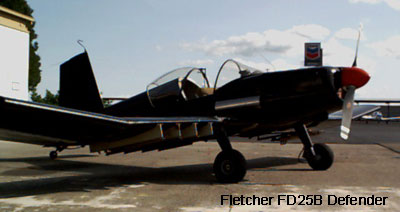 The roots of the P-750 XSTOL go back almost fifty years. In 1953, Mr. John W. Thorp, an American aircraft designer employed by Fletcher Aviation Corporation of California, developed the FD 25 Defender, a ground attack aircraft. Mr. Wendell S. Fletcher, in response to the needs of the fledgling New Zealand agricultural aviation industry, and in conjunction with Mr. Thorp, developed the idea for the FU 24 agricultural aircraft. The FU 24 would utilize many features of the FD 25. Their proposal was well received in New Zealand and, with orders for the first 100 aircraft, the FU 24 was born.
The roots of the P-750 XSTOL go back almost fifty years. In 1953, Mr. John W. Thorp, an American aircraft designer employed by Fletcher Aviation Corporation of California, developed the FD 25 Defender, a ground attack aircraft. Mr. Wendell S. Fletcher, in response to the needs of the fledgling New Zealand agricultural aviation industry, and in conjunction with Mr. Thorp, developed the idea for the FU 24 agricultural aircraft. The FU 24 would utilize many features of the FD 25. Their proposal was well received in New Zealand and, with orders for the first 100 aircraft, the FU 24 was born.
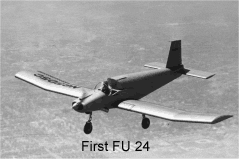 The first aircraft was delivered 12 months later. The subsequent 11 aircraft were partially assembled in America and fully assembled upon arrival in New Zealand. The next 89 aircraft were completely assembled in New Zealand. The first aircraft was delivered 12 months later. The subsequent 11 aircraft were partially assembled in America and fully assembled upon arrival in New Zealand. The next 89 aircraft were completely assembled in New Zealand.
It is interesting to note that that first delivered aircraft is still in operation. Over the many years it has been upgraded from the Continental 225 hp. It is a tribute to Mr. Thorp’s sound basic design that this aircraft has gone from 225hp, 240 hp, 260 hp, 285 hp, 300 hp, 400 hp and is flying today with a 550 hp turbine powerplant!
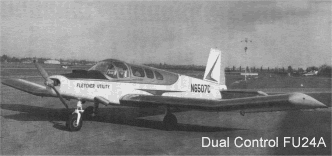 The FU 24 (“Fletcher” as it is known in New Zealand) has had hundreds of modifications over the subsequent decades. Bigger hoppers, dual controls, aerodynamic improvements, and even adapted automotive V8 engines have been and are under development. The FU 24 (“Fletcher” as it is known in New Zealand) has had hundreds of modifications over the subsequent decades. Bigger hoppers, dual controls, aerodynamic improvements, and even adapted automotive V8 engines have been and are under development.
Mr. Fletcher sold the manufacturing rights to a New Zealand group and production of the FU 24 was moved to New Zealand in 1961.
In 1967 the world saw the first turbine powered agricultural aircraft when a Pratt and Whitney PT6-20 of 500 hp was fitted to a FU 24 Fletcher. The airframe of this particular aircraft was heavily modified to not only carry the engine, but to contain the bigger hopper and much bigger load. After the initial success of this modification, a Garrett TPE 331 of 530 hp was installed in another heavily modified Fletcher and it flew in 1968. Another horsepower and hopper increase came along in 1970 with a Garrett TPE 331 of 665 hp and a 50 cubic foot hopper. These were not production modifications and in 1972 a design study found that the FU 24 was reaching its design limits. It was determined that a new aircraft design was needed.
 In 1975, Pacific Aerospace Corporation (PAC) began working on a new design. It was named “Cresco,” which is Latin for “I grow”. The new aircraft featured a longer fuselage, a massive hopper, enlarged fin and rudder, revised wing with integral fuel tanks (wet wing) and a 600 hp, Lycoming LTP 101 turbine. It retained all the good features that had made the Fletcher a local legend. The aircraft was extremely rugged, easy to fly and maintain, and safe. It was an instant success, production began and it was Type Certified as the 08-600 Cresco. In 1975, Pacific Aerospace Corporation (PAC) began working on a new design. It was named “Cresco,” which is Latin for “I grow”. The new aircraft featured a longer fuselage, a massive hopper, enlarged fin and rudder, revised wing with integral fuel tanks (wet wing) and a 600 hp, Lycoming LTP 101 turbine. It retained all the good features that had made the Fletcher a local legend. The aircraft was extremely rugged, easy to fly and maintain, and safe. It was an instant success, production began and it was Type Certified as the 08-600 Cresco.
This aircraft appeared very similar to the FU 24 Fletcher at first glance, but it was a much bigger machine and improved in many ways.
1992 saw the introduction of the famous PT6-34AG turbine engine of 750 hp. Pratt and Whitney of Canada specifically designed this engine model for the agricultural aircraft market. It is considered by some to be perhaps one of the finest engines that Pratt and Whitney manufactures. Its reliability, specific fuel consumption, durability, ease of maintenance, and cost of overhaul has
helped earn it this great reputation.
The PT6 Powered Cresco 750 is a very well balanced aircraft and remains in production today.
The definition “operating” in New Zealand needs further clarification. In the steep New Zealand hill country, “operating” usually means
operating from an unimproved landing strip, often on the side of a hill with a flat spot at the top to load. The PAC 750 Cresco, with its high
lift wing, will usually be found lifting 5,000 pounds of fertilizer from the ground. That’s two and a half tons. With GPS to help make accurate
dispersal runs, it will often be back for another load in less than 4 minutes. The 5,000-pound load of fertilizer is literally dropped onto the
hopper. From brakes on to brakes off, the loading operation is completed in around 7 seconds and power is applied for the takeoff run. No
current turbine can operate in these conditions alongside a PAC 750 Cresco, load for load, week for week, year for year and do it with less
maintenance, ease of pilot operation or safer. They have all been tried, but the conditions get them in the end. One unforeseen problem
arose with the introduction of the Cresco, the aircraft was dispersing material faster than the trucks could deliver it to the aircraft.
Because of the extreme corrosive effect of fertilizers, the manufacturer goes to extraordinary lengths to corrosion proof the structure. All
aluminum is alodined and painted with epoxy paint prior to assembly. All metal components are treated, painted with epoxy and assembled.
All external lap joints are sealed with a special compound prior to the riveting process. After assembly, all the interior areas are treated with
another corrosion resisting barrier. Stainless steel control cables are used throughout. All holes are sealed, in other words: the aircraft is
sealed from the outside elements.
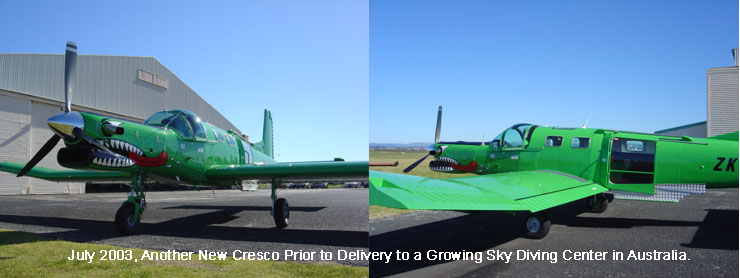
P-750 XSTOL
In 1999, the principles of Utility Aircraft Corporation, an American Company, knowledgeable of the record of the PAC 750
Cresco, discussed their vision of an enlarged version with Pacific Aerospace Corporation. The design team at Pacific Aerospace
Corporation reviewed an earlier design study and determined that they could meet this demand utilizing the highly successful
design of the PAC 750 Cresco.
The skydiving community needed such an aircraft. One that will carry 17 skydivers to altitude, and return to the point of departure
in approximately 15 to 16 minutes. An aircraft that will not break down under continual use. An aircraft that is easy to fly,
inexpensive to maintain, insure and operate. An aircraft that as delivered, will meet the needs of the Drop Zone Operator without
further modifications and expense. An aircraft that utilizes common, readily available components.
For Pacific Aerospace Corporation, this is not a problem. Because that’s the way they have been doing things in New Zealand,
for almost fifty years. This design and production philosophy plus the existing manufacturing processes will be used on the PAC
750 XL, ensuring years of value for the owner.
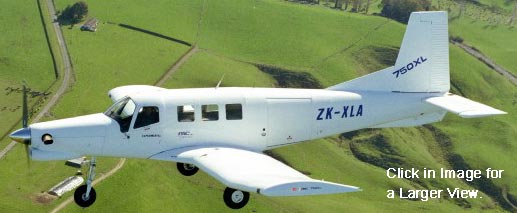 On March 10th, 2004, the US Federal Aviation Administration certified the P-750 XSTOL under the very latest revisions of Part 23. After the exhaustive development program, little of the original Cresco remained! Wings, ailerons, flaps, fuel system, etc. have been either replaced or modified.
On March 10th, 2004, the US Federal Aviation Administration certified the P-750 XSTOL under the very latest revisions of Part 23. After the exhaustive development program, little of the original Cresco remained! Wings, ailerons, flaps, fuel system, etc. have been either replaced or modified.
From initial drawings to the FAA certification took about 52 months In the aircraft certification business, for a new product, this is a remarkable feat.
Pacific Aerospace Corporation's general manager, Mr. Brian Hare and his team of managers, engineers and fabricators have a lot to be proud of. A most remarkable achievement.
|

